We are delighted to introduce this portrait of the Port of Rotterdam, developed by the Leiden-Delft-Erasmus initiative Port City Futures led by Prof. Carola Hein.
Rotterdam is an exceptional port, city, and port-city-territory in many aspects. For many years, it was the world’s busiest port. It remains a major transshipment hub through which commodities enter and exit the EU despite ceding pole position to Chinese competitors. The port thus well-deserves its nickname, ‘the gateway to Europe.’ In 2018, before the global pandemic impacted international trade, some 469 million tons of cargo moved through Rotterdam, ranging from fossil fuels to fruit juices [1]. However, volume of trade alone does not define the port. Rotterdam prides itself on being a frontrunner in technological and spatial innovation, particularly in areas such as digitalization. Local stakeholders are also working hard to improve the city’s standing as Maritime Capital [2] and Rotterdam’s long history and its resilience remain central to the stories that residents tell about themselves and their city.
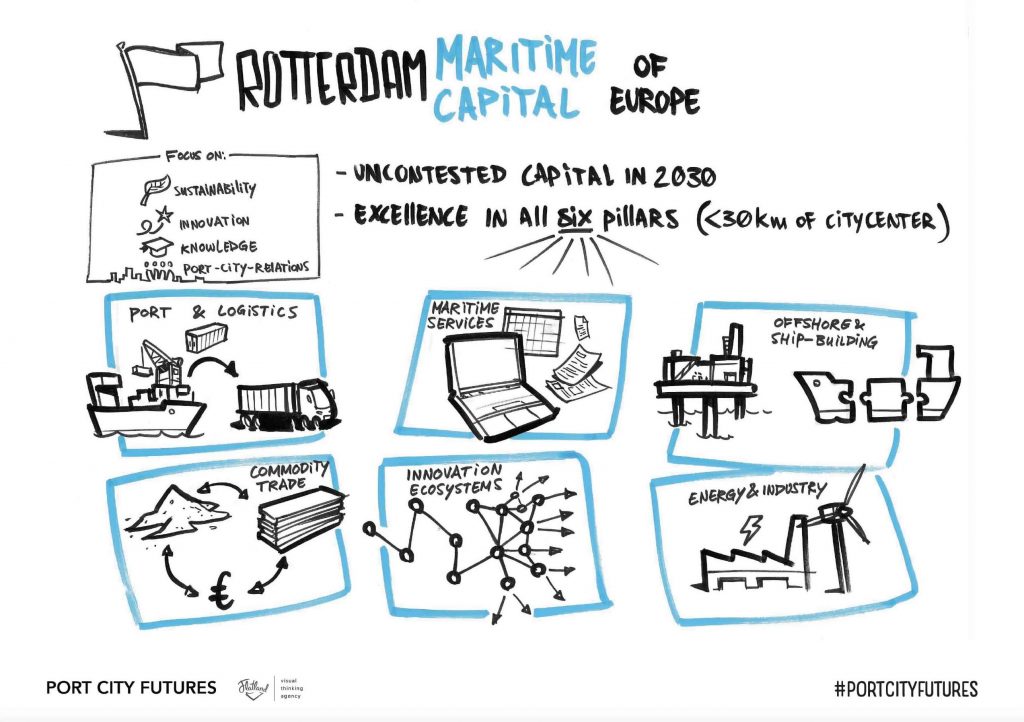
Port, municipal and regional leadership is necessary to design the future of the port city territory. Different interest groups, including government actors, scientists, commercial interests, and residents’ associations, must also collaborate to find solutions.
To understand how port and city are facing the future, our portrait includes interviews with the CEO of the Port of Rotterdam, Allard Castelein; Walter de Vries, an urban planner working for the City of Rotterdam; Helmut Thoele, an urban and regional planner and Senior Policy Advisor for the Province of South Holland; and Paul Gerretsen, Director of the Deltametropolis Association, which seeks to bridge different interest groups and promote sustainable development in the wider Randstad region. These interviews offer unique insights into how leading figures are steering Rotterdam’s direction of travel at a time when climate change requires profound transformations in how the port works and interacts with the wider region and its ecologies.

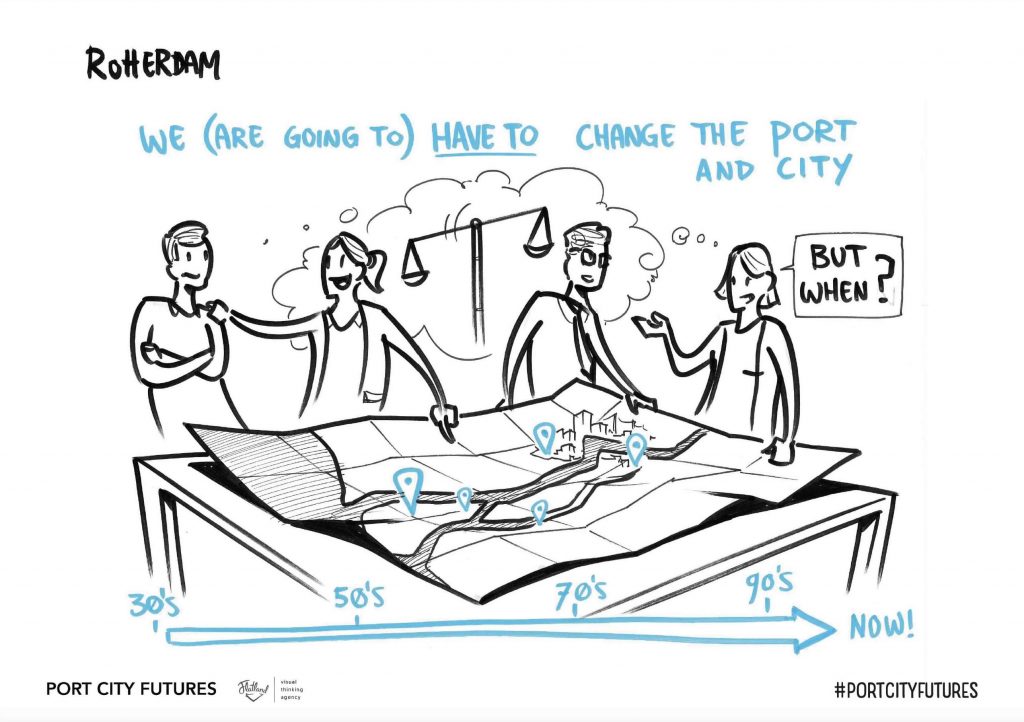
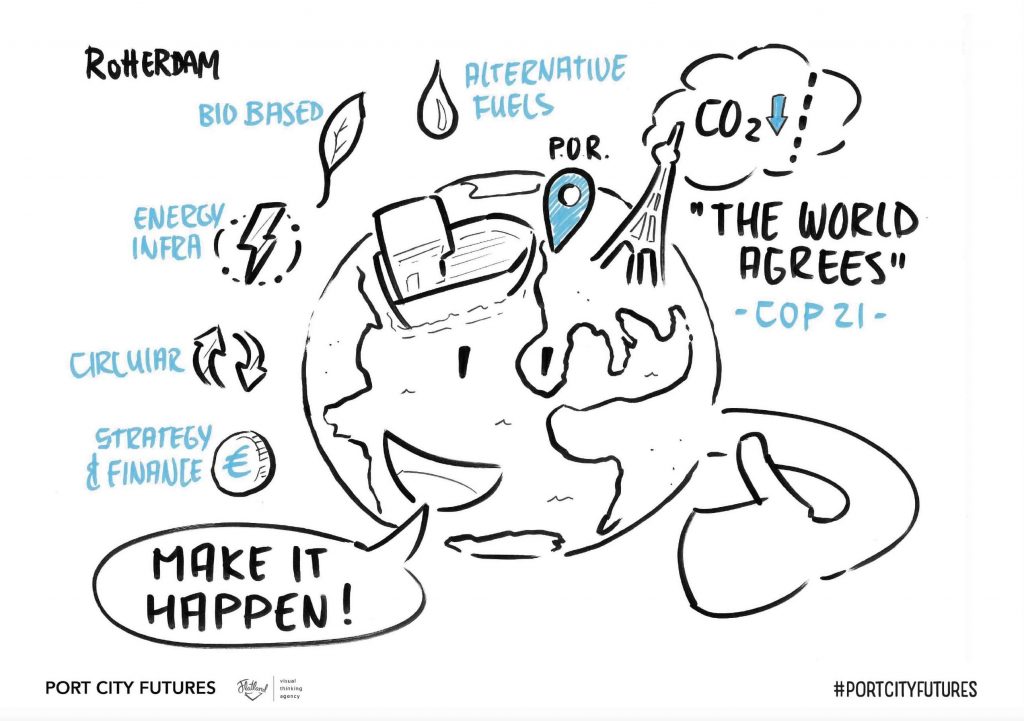
In the articles comprising this PORTUS Portrait, we first introduce the Rotterdam past and how it continues to influence the present. Our articles trace the port and city’s historical development from a fishing village by the river Rotte to a global maritime hub and beyond. In doing so, we pay particular attention to the role of technological and infrastructural innovations and the development of port and city as petroleum hubs. We also dive below the surface to seek Rotterdam’s history. The city contains a rich archive underground. Under the water, meanwhile, the dredging necessary to maintain depth in the New Waterway undermines the area’s wider biodiversity both literally and figuratively. Our articles explore the roles that both underground and underwater efforts have played in creating Rotterdam’s port and city (and might play in shaping their possible futures).

Having explored these currents of the past and their present impacts, we turn to the Rotterdam of today. The contributing authors add insights regarding the port’s leading role as an innovator, exploring responsible cargo, the port’s sustainable roadmap, and the role that hydrogen can play in the energy transition. The scale of the port-city-territory is not limited to the immediate vicinity of the port, of course: our authors show how logistics centers for the port of Rotterdam can be located more than hundred kilometers away, emphasizing the widespread territorial impact of the port. If attention to the regional scale is one part of innovation in Rotterdam, attention to local development and the human scale is another. Our articles explore recent innovation in former port areas, notably in Rotterdam’s Makers district, the Merwe Vierhavens or M4H, as well as interventions to nurture new talent for maritime practices.
We then shift our focus to how Rotterdam can meet various challenges, both in the present and coming down the pipeline. Not least among these challenges is the ever-present and accelerating crisis of climate change. Combating it necessitates wholesale transformations in our social, political, and economic systems and priorities. Some of the transformations facing Rotterdam concern the port’s internal operations and its networking ─ both physical and digital ─ within wider networks of freight transportation. Others include the need to move away from fossil fuel dependence and participate in the sustainable remaking of port, city and region. Our articles ask: What should the port of Rotterdam of the future look like? How can it not only adjust to but also actively participate in tackling broader societal issues?
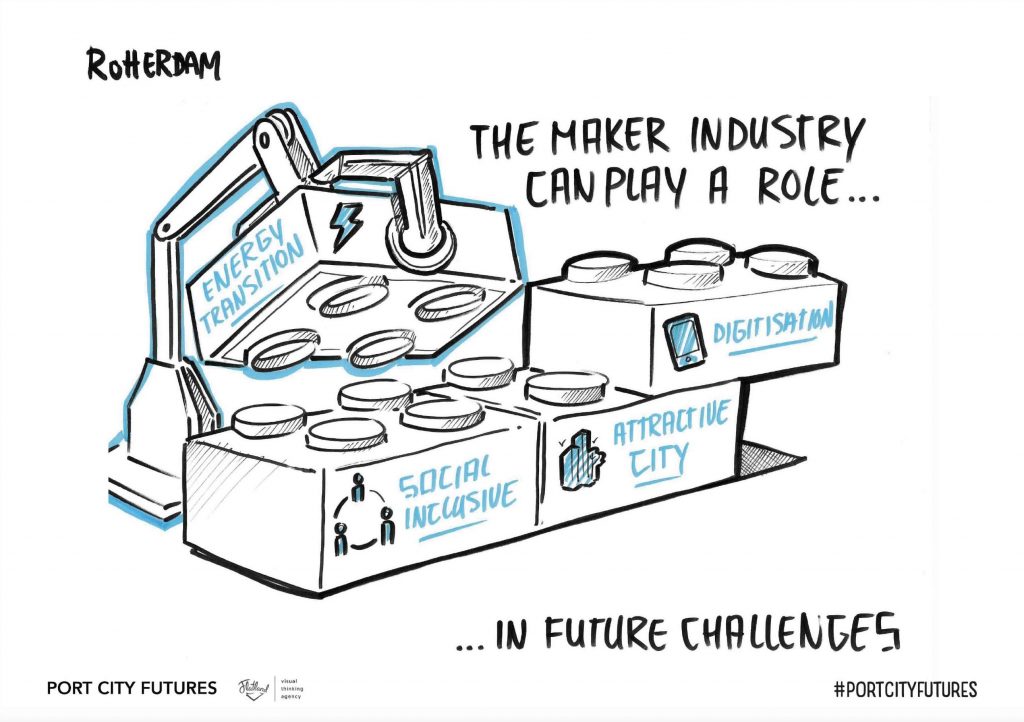
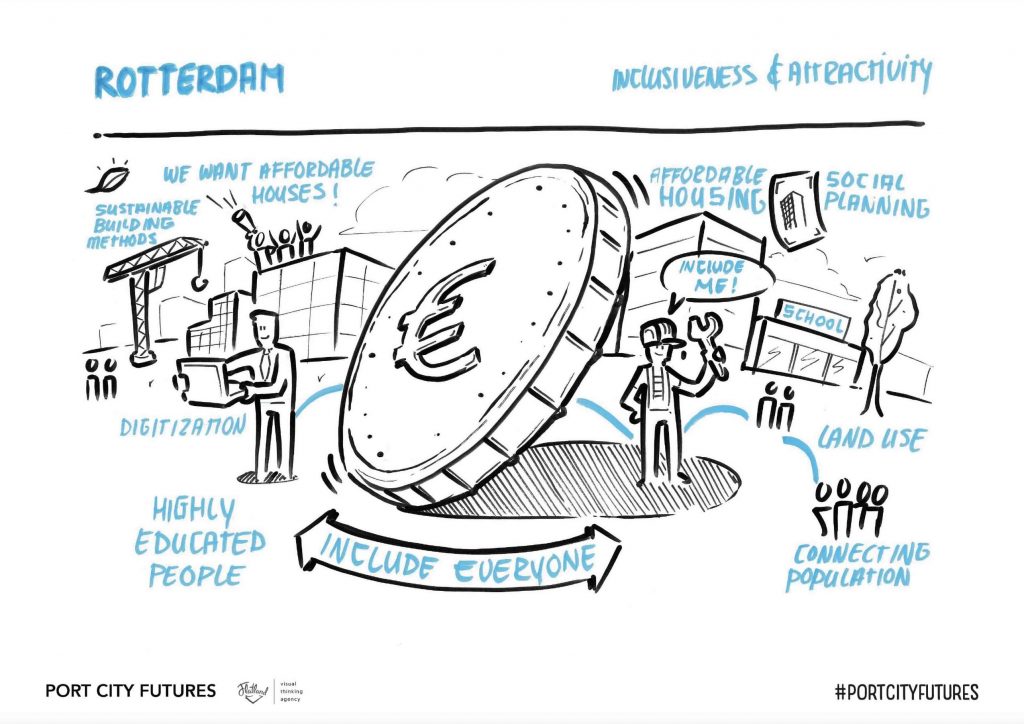
Our authors demonstrate that innovative experiments in infrastructure ─ of both the material and ‘green’ or nature-based kind ─ are crucial here. Whether shallowing (verondieping) the New Waterway through stopping its dredging or converting natural gas to hydrogen infrastructure, infrastructural transformations can help port and city meet the aforementioned challenges and participate in the production of more sustainable socio-ecological and economic systems. Regional design ─ which considers solutions to problems through design interventions at higher levels of scale ─ can also contribute. At TU Delft, students in the Research & Design studio Spatial Strategies for the Global Metropolis explore how the Port of Rotterdam might participate in transitioning the wider region towards a more circular economy.
Creative approaches, including art, can also play an important part in reconnecting port and city and reconceptualizing the port city territory, as our authors demonstrate through mental mapping approaches, paintings, and photographs.
In summary, our portrait paints a picture of Rotterdam at a crossroads. Port and city have enjoyed a prosperous history thanks to their mutual development. Today, the port plays a crucial role within European distribution networks. But the threat of climate change and environmental breakdown, and the necessity of transitioning towards a more circular economy, makes change ever more urgent. In response, diverse actors ─ from scientists to policy-makers ─ are asking themselves what the port, and port-city, of the future should be. We hope that the ways they are doing so presented by our portrait can help to inspire actors in other ports and port-cities grappling with the same challenges of our current historical moment.
Head Image | The Erasmus Bridge in Rotterdam. (Photo: Carola Hein, CC-BY 4.0).
Notes
[1] https://nlflag.nl/business-nl/gateway-europe/
[2] https://www.rotterdammaritimecapital.com/
References
A dictionary of business and management (2009), 5th edn, Oxford University Press, Oxford.